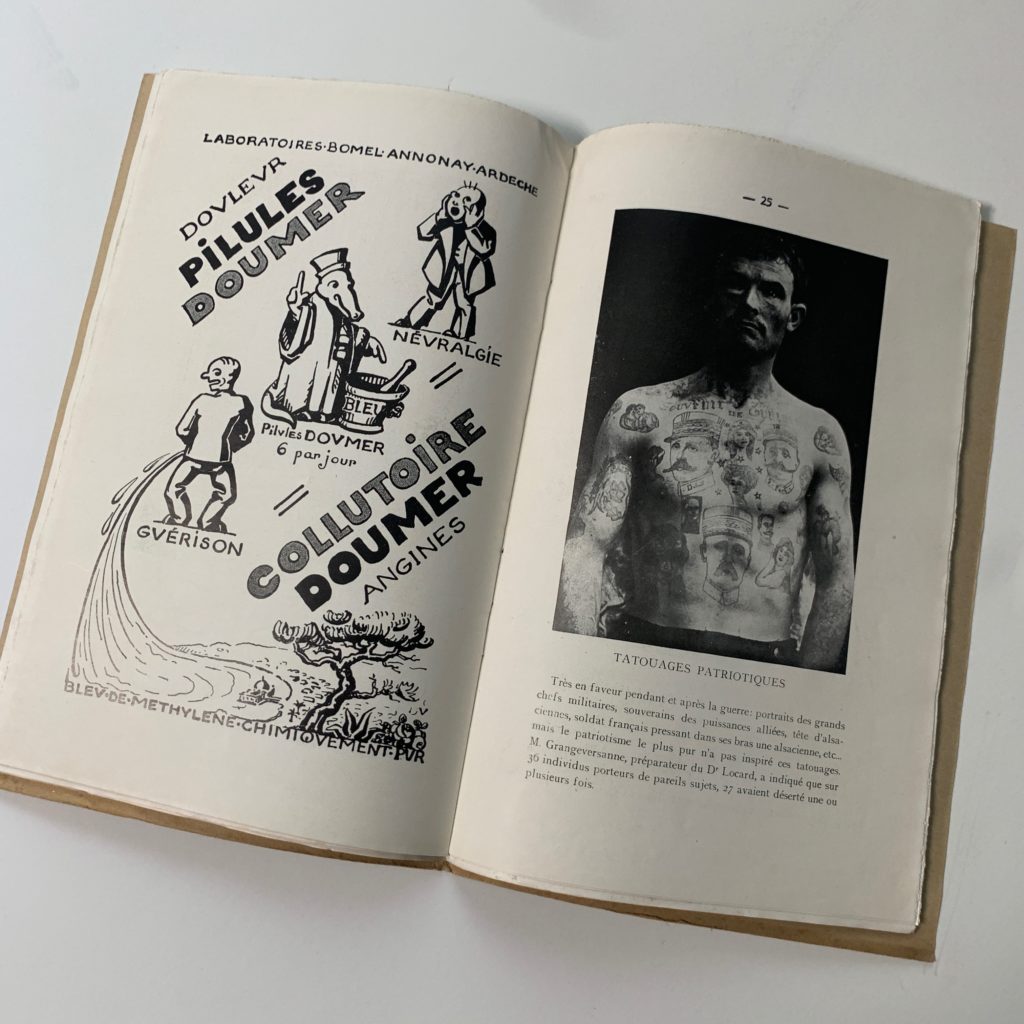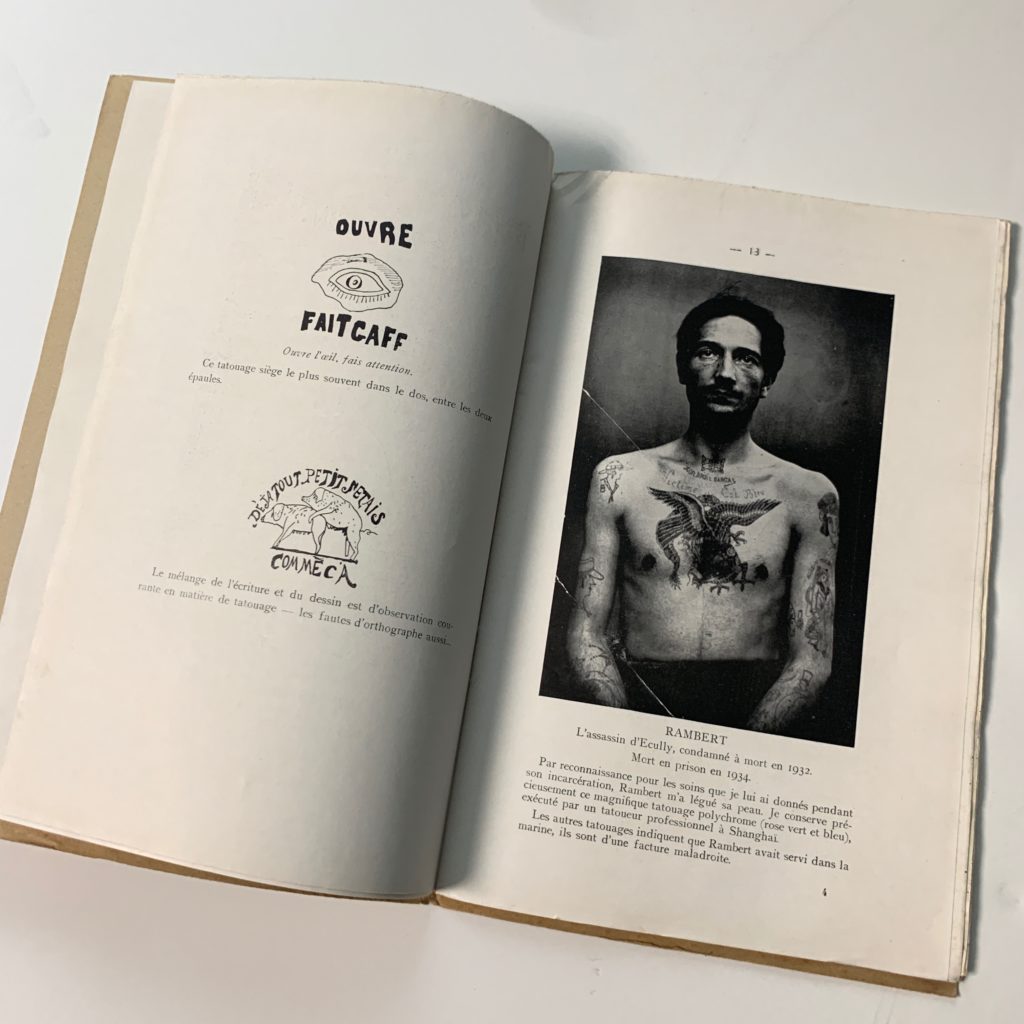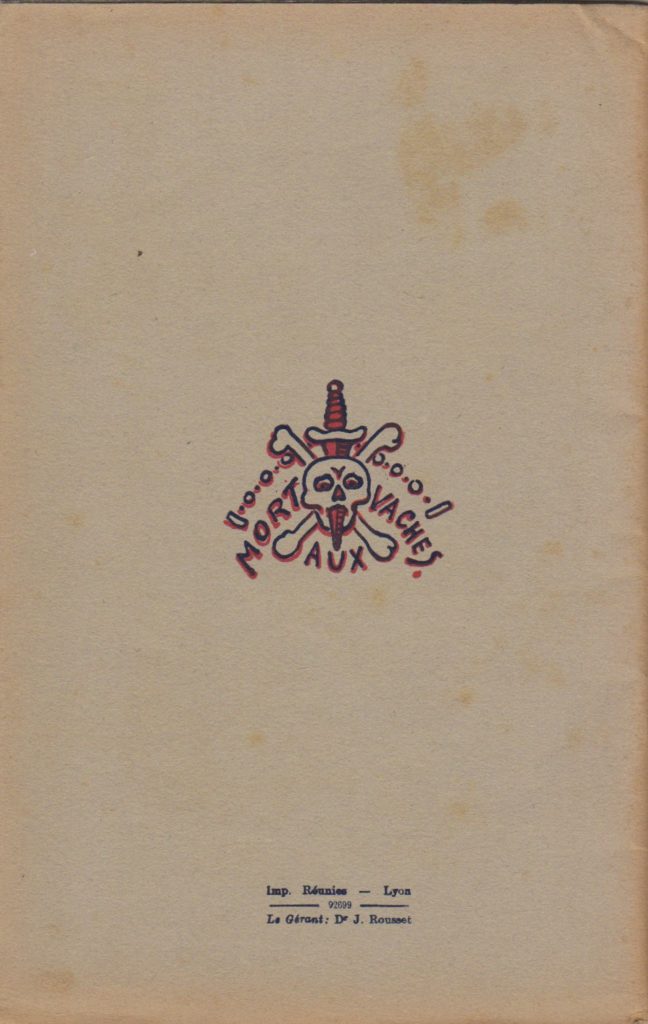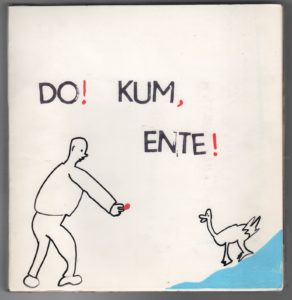24. [Tattooing]. LACASSAGNE, Jean. TATOUAGES DU MILIEU.
$1250
Scarce and early work on tattoos in the French criminal underworld, written for an audience of medical school alumni and published under the auspices of the Hospices Civils de Lyon. Issued as a supplement to Crocodile No. V.
The author, first the doctor of a regiment and later head of the Lyon prison medical service, was the son of Alexandre Lacassagne, founder of the Lyonnais school of criminology; in contrast to the purely biological theories of Lombroso, the Lyon School placed emphasis on environmental factors, not heredity alone. The elder Lacassagne published an anthropological study of tattoos in 1881, on which foundation his son built his own research and scholarship.
Preface by Edmond Locard, the father of modern forensic science and student of A. Lacassagne.
Illustrated throughout with line drawings of tattoos, as well as black and white photographs, the majority furnished by the Laboratoire de Police of Lyon. Most of the men and women pictured are identified by profession alone (sailor; pimp), by prison location, or not at all, with more commentary devoted to tattoo style and technique than to the individual. One exceptional subject, however, is named: the murderer Louis-Marius Rambert, bearer of a “magnifique tatouage polychrome,” the work of a professional Shanghai tattoo artist. Before dying of tuberculosis in prison, Rambert willed his own skin to Lacassagne, in gratitude for his care and services; the author took care to preserve it, and the elaborate blue-and-rose tattoo of an eagle battling a dragon (shown in this volume) was later used in the binding of Rambert’s own manuscript memoirs.
Men’s tattoos are classified by subtype and purpose: dedicatory; obscene; anti-militaristic; patriotic; etc. Women appear only in the section devoted to prostitutes, where Lacassagne takes a tone of affectionate, knowing contempt: tattoos on these women are, he says, invariably low-quality, monochrome, sentimental, and serve as markers of a lover’s ownership; furthermore, the willingness to be tattooed is itself an early sign that a girl will go bad. Even “les tatouages lesbiens,” he claims, are only substitutes; mementos of prison love-affairs, soon abandoned when “l’homme reprend tous ses droits.” The included images are thus striking in their irreverence, cynicism and vulgarity, which Lacassagne considers exceptional and unusual for women. “Oh merde encore un con qui me regarde,” reads one woman’s arm.
OCLC does not locate the title, nor do we find it in the BNF. A rare and important work on tattooing.

![24. [Tattooing]. LACASSAGNE, Jean. TATOUAGES DU MILIEU. Image](http://catalogue15.briancassidy.net/wp-content/uploads/2019/05/23246-648x1024.jpeg)






